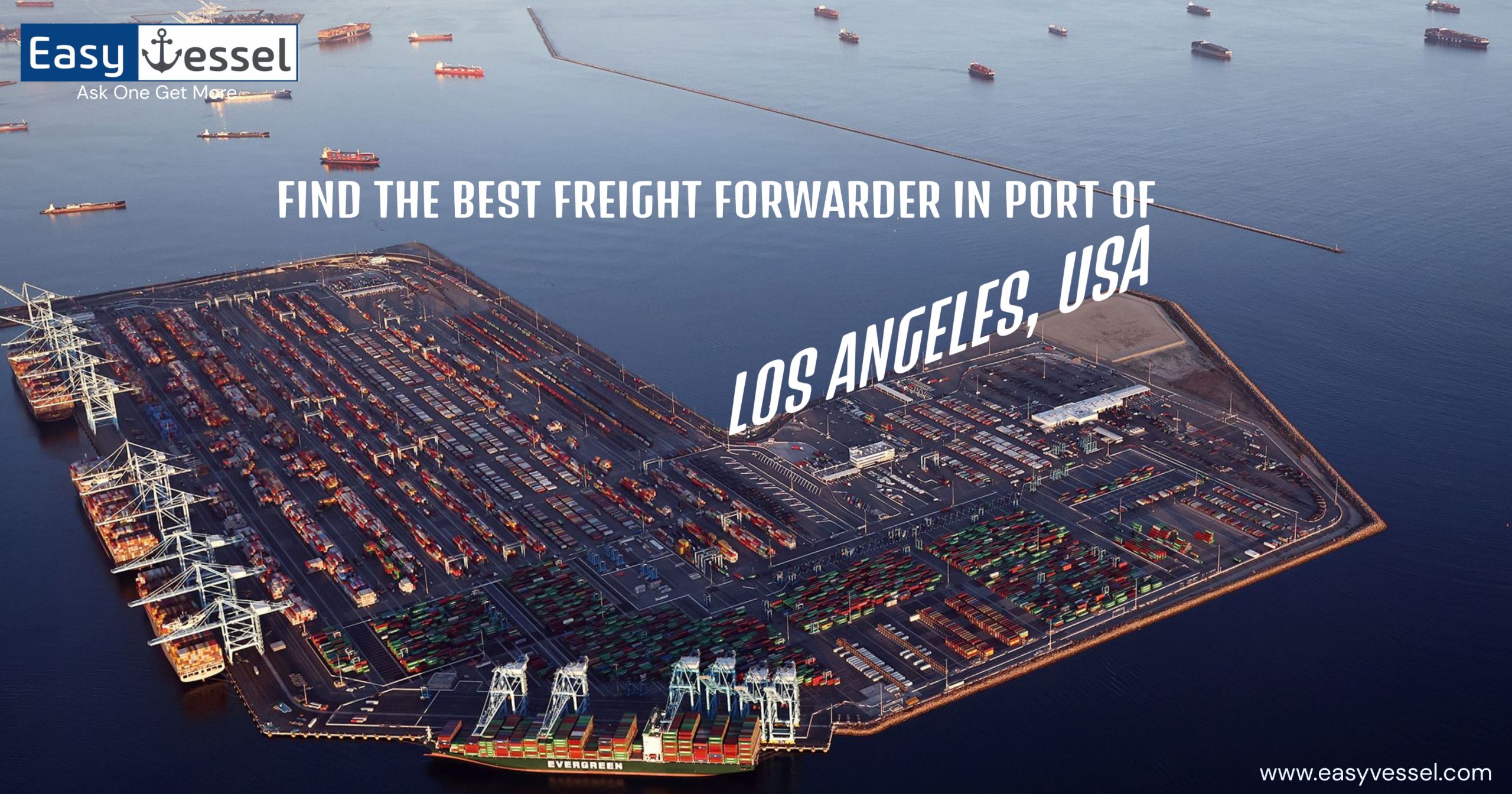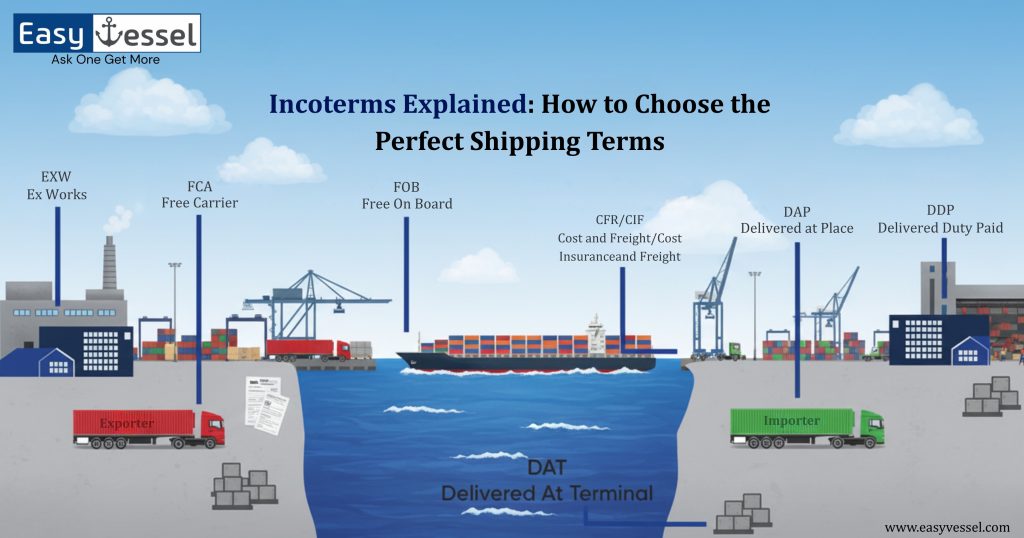Introduction
One of the busiest and most significant seaports in the United States and the Western Hemisphere is the Port of Los Angeles in San Pedro Bay, California. Handling millions of containers annually is a primary gateway for international trade, connecting U.S. businesses to markets in Asia, Europe, and beyond. For importers and exporters looking to streamline their shipping operations, finding the best freight forwarder in the Port of Los Angeles is crucial to navigating complex logistics, reducing freight charges, and ensuring smooth cargo movement.
Why the Port of Los Angeles is a Key Shipping Hub
The Port of Los Angeles (POLA) is one of the most vital gateways for international trade in the United States. Strategically located in San Pedro Bay, just 25 miles south of downtown Los Angeles, it is a critical link between global markets and the U.S. economy. The port boasts a vast and modern infrastructure, including deep-water berths, advanced container terminals, and sophisticated cargo-handling technology, enabling it to accommodate some of the largest vessels in the world efficiently.
One of its most significant advantages lies in its multimodal connectivity. The port is directly linked to a comprehensive network of highways and intermodal rail systems, which allows for rapid and efficient distribution of goods to and from inland locations across North America. This connectivity significantly reduces transit times and costs for shippers and logistics providers.
Moreover, the proximity and integration with the neighbouring Port of Long Beach from the nation’s largest port complex. These ports manage more than 40% of all containerized imports entering the United States, making this hub a cornerstone of U.S. commerce. Their combined efforts in sustainability, digitalization, and capacity expansion have positioned the complex as a model of modern port operations.
Beyond physical infrastructure, the Port of Los Angeles is a leader in embracing technological innovation. Initiatives like the Port Optimizer™, a digital platform that enhances cargo visibility and supply chain planning, exemplify the port’s commitment to efficiency and transparency in operations.
Key highlights of the Port of Los Angeles:
- Over 7,500 acres of land and water
- More than 40 shipping lines connecting over 170 global ports
- Advanced cargo-handling technology and automation
- Eco-friendly initiatives for sustainable shipping
Given its strategic importance, working with an experienced freight forwarder familiar with POLA’s procedures can dramatically enhance supply chain efficiency.
What Does a Freight Forwarder Do?
A freight forwarder is a mediator between the shipper and various transportation providers, including truckers, customs officials, and ocean carriers. Their primary role is to manage the logistics of moving goods from one place to another, particularly across international borders.
Core services offered by freight forwarders include:
- Arranging cargo transportation (ocean, air, rail, or truck)
- Preparing and managing shipping documents
- Customs clearance and compliance
- Warehousing and cargo consolidation
- Insurance and risk management
Read More: What Freight Forwarders Do: A Complete Guide to Their Services
Benefits of Choosing the Right Freight Forwarder at POLA
Choosing a skilled freight forwarder based at the Port of Los Angeles provides several advantages:
1. Expertise in Local Port Operations A freight forwarder familiar with POLA can efficiently coordinate with port authorities, customs agents, and terminal operators, reducing the chances of delays and penalties.
2. Cost Optimization The right forwarder can help minimize transportation costs by deepening their knowledge of freight charges, tariffs, and shipping lanes. They also negotiate bulk shipping rates, reducing costs for small—and medium-sized businesses.
3. complex regulations govern Regulatory Compliance in International shipping. Freight forwarders ensure that all documentation complies with local and international laws, avoiding customs issues.
4. Streamlined Logistics From warehousing to final delivery, freight forwarders handle every aspect of the shipment, allowing businesses to focus on their core operations.
5. Real-Time Tracking and Transparency Modern freight forwarders use digital tools for shipment tracking, updates, and performance metrics, providing complete visibility and control over your logistics.
Read More: Find the Best Freight Forwarder in Cartagena Port, Colombia
Steps to Engage a Freight Forwarder in Port of Los Angeles
Use these easy steps to locate and collaborate with a reliable freight forwarder in the Port of Los Angeles.
1. Sign Up on EasyVessel
EasyVessel is an innovative platform that connects businesses with vetted freight forwarders. You must provide basic company details and shipping preferences to create an account.
2. Post Your Shipping Requirements
Submit your shipment details, including cargo type, origin, destination, and preferred timelines—the more accurate your input, the better the matching results.
3. Receive and Compare Bids
Freight forwarders will respond with bids tailored to your needs. Review pricing, transit times, and services included.
4. Select the Right Partner
You can check reviews, certifications, and past performance to choose the freight forwarder that best meets your budget and service expectations.
5. Track and Manage Your Shipment
After booking, you can track your shipment in real time through the EasyVessel dashboard. You can also communicate directly with your forwarder for updates and support.
Tips for Choosing the Best Freight Forwarder in Los Angeles
- Experience and Certification: Look for forwarders with FMC (Federal Maritime Commission) licenses and years of experience handling shipments through POLA. A certified and seasoned forwarder is more likely to understand complex regulatory requirements and respond swiftly to shipping challenges.
- Service Portfolio: Choose a forwarder offering comprehensive services, including customs brokerage, consolidation, and inland distribution. A diverse service offering means you can manage all your logistics needs under one roof, reducing coordination hassles.
- Technology Integration: Forwarders using modern logistics software provide better tracking, communication, and analytics. Digital tools like shipment visibility dashboards and automated updates improve supply chain transparency.
- Customer Reviews: Testimonials and online ratings give insight into reliability and customer satisfaction. Reviews from clients with similar shipping needs can be particularly valuable in evaluating service quality.
How EasyVessel Helps Businesses Ship Through Port of Los Angeles
EasyVessel simplifies international shipping by making it easy to find trusted freight forwarders based in significant ports like Los Angeles. Businesses can easily compare rates, timelines, and services by offering a transparent bidding platform. This helps lower freight charges and eliminate guesswork in the selection process.
EasyVessel’s platform also ensures that all listed forwarders are verified and compliant with necessary shipping regulations. Their built-in document sharing, messaging, and tracking tools enhance collaboration between businesses and logistics providers, leading to better decision-making and improved shipping outcomes.
Conclusion
As the premier gateway for international trade on the West Coast, the Port of Los Angeles plays a pivotal role in global logistics. Partnering with the right freight forwarder is essential for businesses to expand their international reach or improve their shipping efficiency.
EasyVessel makes finding a reliable and cost-effective freight forwarder simple and transparent. Start optimizing your cargo movement through the Port of Los Angeles today.
Reference
Port of Los Angeles by Wikipedia[1].
Frequently Asked Questions
The Port of Los Angeles is located in San Pedro Bay, approximately 20 miles south of downtown Los Angeles, California. It is situated along the Pacific Ocean and is adjacent to the Port of Long Beach, forming the largest port complex in the United States.
Using a freight forwarder at POLA ensures smooth cargo handling, faster customs clearance, and access to vast transport networks. Their local expertise helps you avoid delays and optimize freight charges.
Freight forwarders negotiate bulk rates with carriers, consolidate shipments, and plan efficient routes. This helps businesses minimize expenses related to storage, customs, and unnecessary delays.
Most freight forwarders manage import and export logistics, offering end-to-end support for documentation, transportation, and regulatory compliance.
The Port of Los Angeles has 25 cargo terminals, including container terminals, breakbulk facilities, and liquid bulk terminals. These terminals handle various cargo types, such as automobiles, petroleum, and general freight.



